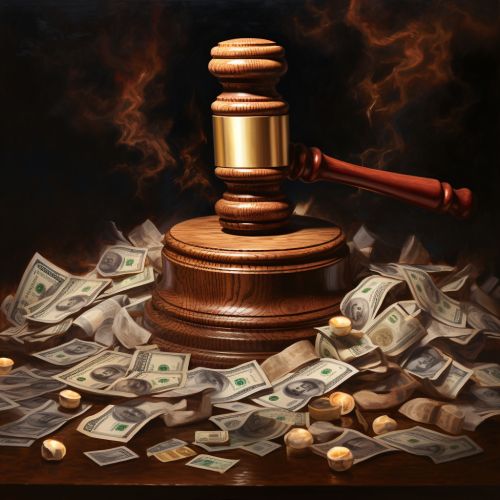Corruption
Definition and Overview
Corruption, in its broadest sense, refers to the abuse of power by a public official for private gain or any organized, systematic attempt to undermine the public's trust in its institutions. It is a complex social, political, and economic phenomenon that affects all countries to varying degrees. Corruption can take many forms, including bribery, embezzlement, nepotism, cronyism, and fraud. It can be as small as a traffic officer accepting a bribe to ignore a violation, or as grand as a head of state siphoning off millions from the public treasury.


Types of Corruption
Corruption can be categorized into different types based on the nature of the act, the number of people involved, and the sector in which it occurs.
Petty Corruption
Petty corruption, also known as bureaucratic corruption, involves the exchange of small amounts of money or gifts. This form of corruption is often encountered in the public sector, such as in the police department or in public health services.
Grand Corruption
Grand corruption involves significant sums of money, often at the highest levels of government. It can include acts like embezzlement of public funds or receiving kickbacks in public procurement processes.
Political Corruption
Political corruption involves the manipulation of policies, institutions, and rules of procedure in the allocation of resources and financing by political decision-makers. This can include acts like vote-buying, illicit campaign financing, and manipulation of electoral processes.


Causes of Corruption
There are several causes of corruption, including the absence of a strong legal framework and enforcement, lack of transparency and accountability in public administration, low civil service salaries, and lack of public awareness about corruption and its implications.
Weak Legal Framework and Enforcement
In countries where the legal framework is weak and enforcement is lax, corruption can thrive. This is often due to a lack of political will to enforce anti-corruption laws, inadequate resources for enforcement agencies, and a judiciary that is not independent or is corrupt itself.
Lack of Transparency and Accountability
When there is a lack of transparency in the functioning of public institutions and a lack of accountability of public officials, corruption can flourish. This can be due to inadequate public access to information, lack of transparency in decision-making processes, and inadequate checks and balances in public administration.
Low Civil Service Salaries
Low salaries in the civil service can be a cause of corruption, as it may incentivize public officials to seek additional income through corrupt means.
Lack of Public Awareness
A lack of public awareness about corruption and its implications can also contribute to its prevalence. This can be due to a lack of education, a culture of acceptance of corruption, or a lack of access to information about the negative impacts of corruption.


Effects of Corruption
Corruption has a wide range of negative effects on societies, economies, and political systems.
Economic Effects
Corruption can have significant economic effects. It can deter investment, distort markets, increase the cost of doing business, and undermine economic development.
Social Effects
The social effects of corruption can be profound. It can lead to social inequality, undermine trust in public institutions, and contribute to social unrest.
Political Effects
Corruption can also have significant political effects. It can undermine democracy, distort political processes, and lead to political instability.


Measures to Combat Corruption
There are several measures that can be taken to combat corruption, including strengthening the legal framework and enforcement, promoting transparency and accountability in public administration, improving civil service salaries, and raising public awareness about corruption and its implications.
Strengthening Legal Framework and Enforcement
Strengthening the legal framework and enforcement is a key measure in combating corruption. This can involve enacting strong anti-corruption laws, providing adequate resources for enforcement agencies, and ensuring the independence and integrity of the judiciary.
Promoting Transparency and Accountability
Promoting transparency and accountability in public administration is another important measure. This can involve improving public access to information, promoting transparency in decision-making processes, and strengthening checks and balances in public administration.
Improving Civil Service Salaries
Improving civil service salaries can also help to combat corruption by reducing the incentive for public officials to seek additional income through corrupt means.
Raising Public Awareness
Raising public awareness about corruption and its implications is another key measure. This can involve education campaigns, promoting access to information about the negative impacts of corruption, and fostering a culture of intolerance towards corruption.


